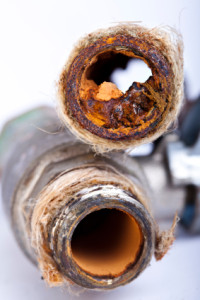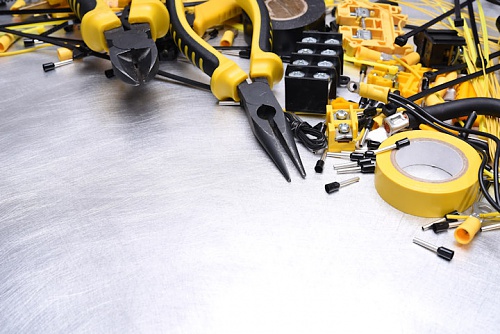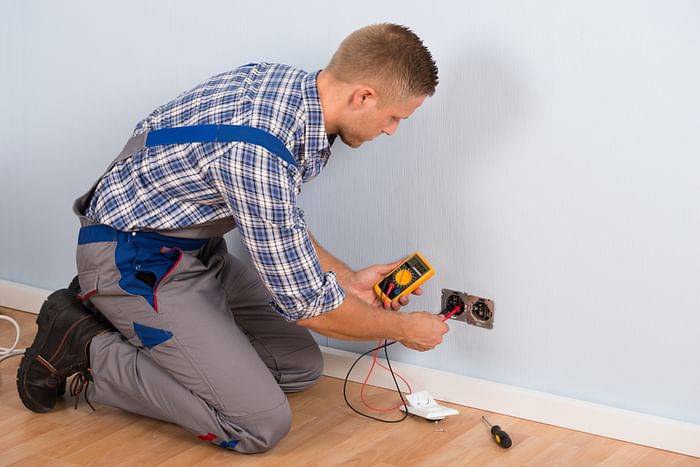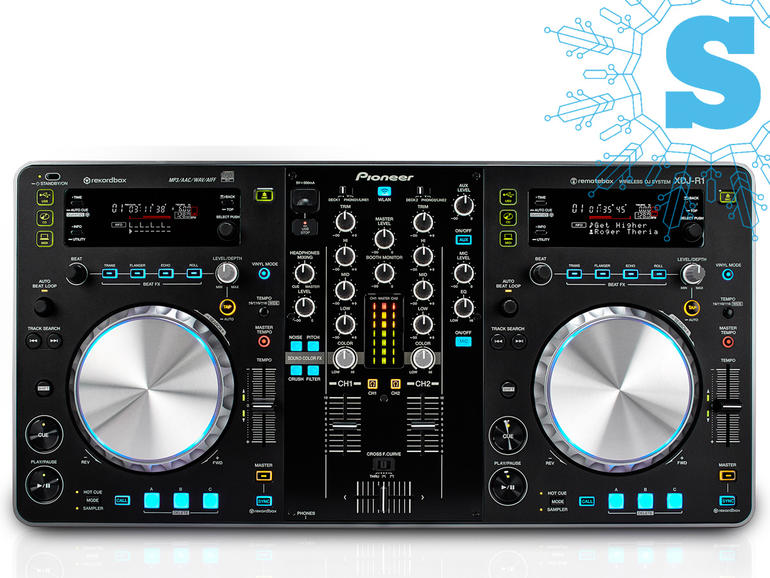THINGS YOU SHOULD KNOW ABOUT PLUMBING
Plumbing is often one of the most overlooked systems both in high-rise buildings and residential apartment blocks. Fixing a leaky faucet or a running toilet in your own house is one thing, but if you own a company that operates in the property management sector, plumbing issues can have grave effects both from a financial and business standpoint.
Whether you manage schools, office building, apartment blocks or healthcare facilities, you will not be spared by the occasional plumbing issue occurring and filling your inbox with complaints. And for good reason – faulty plumbing systems can affect the property in many ways, from permeating the building with unpleasant smells, helping mold develop in certain places by creating moisture, to degrading the overall structural integrity of the building.
Automatic Leaks Detector
Taps, sinks, pipes, and other items may not last forever and may eventually weaken and start leaking. Some property managers let pipes stay for long after they have proven in disrepair, so eventually installing new ones at some point is essential. Assess the damages that the pipes and sinks have suffered and, if the situation calls of it, replace them with brand new ones. From a business standpoint, it is cheaper to replace old pipes than completely renovating the interior in the aftermath of a water-related accident. You can ask a professional plumber to inspect your water system and upgrade where necessary. Consider installing the latest systems which can detect leaks in property.
Water Pressure
Water pressure is another plumbing aspect that experts should notice. Typically, in your average household, the water pressure should be under 80 psi. The situation changes when it comes to bigger structures, such as high-rises or other public buildings. Buildings which are higher than eight stories require pumps, which transport the H2O into water tanks on the highest floor. This system is designed to ensure that water is distributed equally amongst all floors without sacrificing the level of water pressure.
Submeter
When it comes to large buildings like high-rises, submetering is the most practical approach. A submeter is an intricate system that allows landlords, condominium associations, landlords or other legal entities that manage buildings to charge tenants for individual consumption.

Causes of Low Water Pressure in Your Home
We’ve all dealt with clogged drains and pipes that are bad enough to call in a plumber. But what happens when the issue isn’t with the water draining but instead with the amount of water actually coming out? The average in-home water pressure is about 40 to 45 pounds per square inch (or PSI). If you feel like you’re dealing with low water pressure, chances are your pressure has slipped below this number.
Between showering, running the dishwasher, and flushing the toilet, American families use an average of 300 gallons of water a day. We tend not to think about where that water comes from or how it comes out of our faucets. Most of us don’t know where to look if the water pressure drops.
Your Water Supplier is Experiencing an Issue
Before you start turning valves and knocking on pipes, ask around. If your neighbors report similar issues, chances are your low water pressure is not connected to something in your own house.
Your City Has Changed Its Regulations
There is also the possibility that your city has changed some of its water regulations, in which case your water supplier has no choice but to comply.
The Main House Shutoff Valve Isn’t Open All the Way
If you do find that you’re the only one on the block with low water pressure, it’s time to start checking around your own house for the issue.
Your Plumbing
Your plumbing includes all of the pipes and fixtures on your property, from the meter or valve near the street to the faucets inside your home. The following information is important to know about your home’s plumbing
Main Water Valve
This valve controls water flowing into your home. It is normally located where the water line enters your home through the foundation. It is a good idea to locate and mark your main water valve because you can use it to shut off the water in an emergency or when you are making plumbing improvements. It can also be turned off while the property is vacant to prevent water damage that unforeseen leaks might cause. A plumber or HVAC expert should be consulted for long-term water shut off of appliances like water heaters, etc.
Water Service Lateral
This is the pipe that runs underground from the meter or valve near the street to the main water valve inside the house. It is typically made of copper, plastic, or sections of both
Tips For Winterizing Your Plumbing
It is a good idea to locate and mark your main-line valve and check it for proper operation. This valve controls water flowing into your home. Marking the valve will allow you to quickly turn off the water if a pipe should burst or you have other water problems. You can minimize the potential for water damage by ensuring that everyone in the household knows how to shut off the water in an emergency. To make it easier, we’ve provided a main water valve tag you can print and attach to the valve.
Make sure you know where the valves are for your outside spigots. That way, when freezing weather is forecast, you can easily turn off the water to the outside spigots.
Shut off and drain the pipes leading to your outside faucets. Using the valves located inside your home, make sure no water is left to freeze, expand, and cause a leak in these lines.
Never try to thaw frozen pipes with an open flame or torch. If you cannot maintain heat inside your home, take further precautions to prevent damage. Turn off the main water supply and drain the plumbing.
If you’ll be away from home for an extended period, keep the thermostat at a reasonable temperature to protect pipes from freezing.
Insulate pipes in unheated spaces. Hardware or building supply stores carry insulation designed to keep pipes in these areas from freezing.
Protect Your Pipes
The improper disposal of “flushable” wipes, fats, oils, and grease (FOG), and other foreign items in the sink and toilet causes expensive residential and commercial plumbing problems. Flushing unwanted or expired medication can also affect municipal sewer systems and harm the environment. The clean-up of sewer backups and the additional maintenance required to reverse the damage caused by the improper disposal of these items leads to higher utility bills, costly home plumber visits, and expensive pipe replacement.
Detecting Broken Plumbing Pipes and Swimming Pool Leaks
which means it’s time to get the pool and spa ready! Several things can indicate a leak, from the water level dropping by more than ¾” in one week to visual signs, including excessive amounts of dirt on the bottom of the pool, new cracks appearing in deck area, water puddles in the area around the pool, and using more chemicals than normal.
What can I do myself to determine if I have a pool leak?
First, determine if you have a water leak versus evaporation by performing a simple bucket test with the pump on, then again with the pump off. Day 1 (24 hours) turn ON the pump, place a bucket on the second step and fill the bucket equal to the water level in the pool, then mark the level in the bucket. If the water is less in the pool than the mark in the bucket, you may have a leak.
Where Is The Water Leak In My Plumbing Pipes? How Do I Find It?
Don’t let another day go by without taking care of your plumbing pipes. Water leaks are responsible for millions of dollars in damages. Undetected water leaks can happen without anyone even realizing. Just a small pinhole leak, continuously flowing for days, months or even years wreak havoc on a property.
Why Do Pipes Leak?
There are many reasons why pipes leak, every day wear and tear, debris such as hair and grease can cause damage, water pressure, chemical in the water, soil conditions, and fixtures break down. The simple fact is, all pipes are susceptible to water leaks, whether you have an older home or new construction.
Start Looking For Your Water Leak By Gathering Clues
The easiest place to start is with your utility bill. The average family of four uses approximately 12,000 gallons of water a month or 3,000 gallons per person. If your bill is higher than it should be, you probably have a water leak. Also, look for spikes in your bill. Learn more about your utility bill at the EPA website.

Unblocking pipes and fixtures
Common blockage materials
Toilets and toilet pipes get blocked when people put the wrong things down the toilet. Some of the things which should never be put down the toilet are foodscraps, paper, rags, cans, bottles, grease and fat. Wastewater pipes from sinks, basins and laundry tubs can get blocked if people put food waste, especially tea leaves, hot fat and other rubbish down them. If hot fat is poured down an outlet pipe, it will set in the pipe when it cools and cause a blockage.
Plumbing rods
Plumbing rods are pieces of equipment used to remove most blockages from sewer pipes. However, when sewer pipes are broken plumbing rods are not effective and the damaged pipe must be replaced.
Unblocking sewer pipes
The larger sewer pipes have manholes set in them allowing access to the pipe. They are often about a metre underground and are large boxes which usually have walls made of concrete. The pipe opens into the box on one side and starts again on another side.
Before attempting to unblock a sewer pipe it is important to remember:
Before making an inspection, always wait several minutes to allow any poisonous or explosive gases to escape
Never smoke while doing this work
Never do this work alone
Never enter a manhole without proper safety measures. It may be necessary to wear breathing equipment or to ventilate (add fresh air) to the manhole and sewer pipe. The gases in it can kill.
It is always safest to check with the Water Authority, the local government EHO or supervisor before opening the lid or entering the manhole.
If there are no manholes, then there will be IOs with cement or plastic caps on the pipes. There may be a concrete box around the inspection opening. Sometimes these are below the ground and are not easy to find. It may be necessary to dig to find them.



















